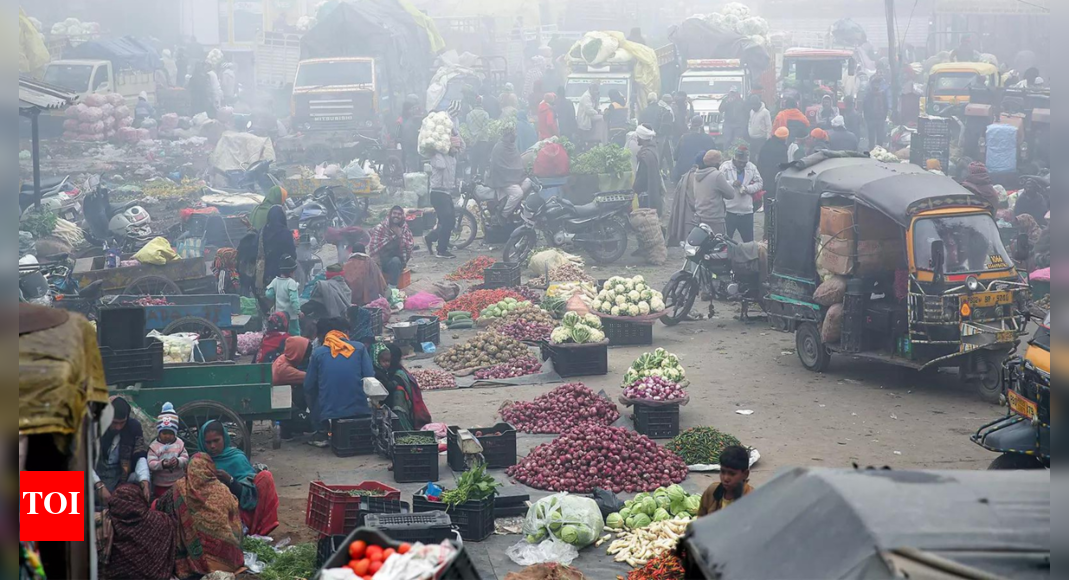Mumbai: The recent cuts in the Goods and Services Tax (GST) are likely to drive down prices of essential goods further, according to a report by Bank of Baroda. The bank predicts that retail inflation, indicated by the Consumer Price Index (CPI), could average around 3.1% in FY2025-26, with a potential for even tighter inflation levels. Disinflation has already been noted, primarily due to declines in food prices.
Reducing Inflation: Insights from Bank of Baroda
The Bank of Baroda’s recent report sheds light on promising trends in inflation that could benefit consumers across India. The bank emphasizes that a combination of government support through reduced GST rates and recent market dynamics may finally be reflected in lower prices for daily essentials. The report anticipates that retail inflation could moderate significantly, averaging at about 3.1% for the fiscal year 2025-26. This optimism arises not only from policy changes but also from the disinflationary pressures already observable in current market conditions.
“We may see episodes of disinflation in the coming days as government support through lower indirect tax rates is likely to be passed on to actual numbers sooner, if not later,” the report states. These assertions are backed by data showing a decline in consumer inflation to 2.1% year-on-year in August 2025, down from 3.7% in the same month last year, marking a notable easing in the cost of living.
Food Prices Stabilizing
A significant contributor to this disinflationary trend appears to be a sustained decrease in food prices. The food price index recorded its third consecutive month of deflation, which fell by 0.7% in August 2025, in stark contrast to a 5.7% increase during the same period in the previous year. This downward pattern has widely been attributed to declining prices for staples like vegetables and pulses.
For instance, the price of vegetables, which significantly affects low-income families, has moderated, providing much-needed relief to consumers. Even staples like onions and potatoes, typically subject to seasonal spikes, have remained stable thanks to improved supply chains, as noted by the bank’s Economic Condition Index (ECI), which reported a score of -0.9% for early September.
| Inflation Indicator | August 2024 | August 2025 | Change |
|---|---|---|---|
| Consumer Inflation | 3.7% | 2.1% | -1.6% |
| Food Price Index | 5.7% increase | 0.7% decrease | -6.4% |
| Overall Inflation (CPI) | 3.4% | 2.07% | -1.23% |
External Influences on Pricing Trends
It’s important to note that the RBI, which governs monetary policy in India, has also taken steps to stabilize prices. After a prolonged period of maintaining its benchmark repo rate, the RBI made a noteworthy reduction in February 2025, lowering the rate after nearly five years. In line with this, the RBI revised its inflation forecasts, anticipating a drop from 4% to 3.7% for the fiscal year 2025-26, contingent upon a normal monsoon. Factoring in all these elements, it becomes clear that both government policies and market conditions are aligned to facilitate a slow but steady descent in inflation, bolstering the purchasing power of Indian consumers.
Despite good news on the inflation front, reports from the Ministry of Statistics and Programme Implementation show that sectors continue to oscillate. While overall inflation remains within the RBI’s target band of 2-6%, specific states like Kerala and Tamil Nadu have shown higher year-on-year inflation rates, hinting at regional disparities within the national average.
Market Dynamics and Consumer Impact
With inflation expected to remain moderate, the Indian banking sector and economy could expect tangible benefits. For example, families could find relief in grocery bills, and supply chains for essential goods are likely to gain stability. This period of easing inflation offers an opportunity for consumers, especially in lower-income brackets, to allocate their budgets more effectively towards essentials and save more.
The RBI’s commitment to maintaining stable price levels resonates with the sentiments expressed by Bank of Baroda. “The disinflationary measures combined with government interventions are expected to provide a cushion for consumers and react positively to overall economic sentiment,” underscores the report.
In conclusion, as the RBI and financial institutions work in tandem to stabilize the Indian economy, consumers can look forward to a downward trend in inflation that could ease financial pressures for many households across the nation. The responsibility now lies with consumers to make informed purchasing decisions as the market dynamics evolve.
Bankerpedia’s Insight 💡
The projected decline in India’s CPI to 3.1% by FY26, attributed to recent GST cuts and falling food prices, holds significant promise for the banking and finance sector. Lower inflation enhances consumer spending power, potentially improving loan demand and economic growth. This shift could stabilize financial markets and encourage investments. For readers, staying informed about these developments is crucial, as they may present new opportunities in savings and investments while ensuring budget planning reflects this anticipated easing of prices. Your financial strategy should adapt accordingly to optimize gains.
What Does This Mean for Me? 🤔
- Salaried Person → Lower prices for essentials, increasing purchasing power.
- Business Owner → Lower prices of essentials will reduce operational costs.
- Student → Lower prices for essentials benefit students financially.
- Self-employed → Lower prices of essentials may increase self-employed profit margins.
- Homemaker → Lower prices for essentials ease household budgeting pressures.
- Retiree / Senior Citizen → Lower prices for essentials will ease financial burdens.
- Job Seeker → Lower prices may improve job seekers’ purchasing power.
- Farmer / Rural Citizen → Lower food prices may increase farmers’ income stability.
Research References 📚
- timesofindia.indiatimes.com
- RBI
- SEBI
- Ministry of Finance
- NABARD
- Department of Financial Services (DFS)
- IMF
- World Bank
Loved our Research? ❤️
Bankerpedia turns financial confusion into clarity!
Subscribe to our YouTube channel for unbiased insights, financial literacy & practical banking wisdom.










